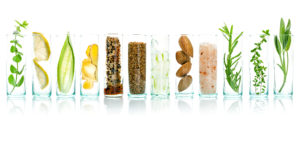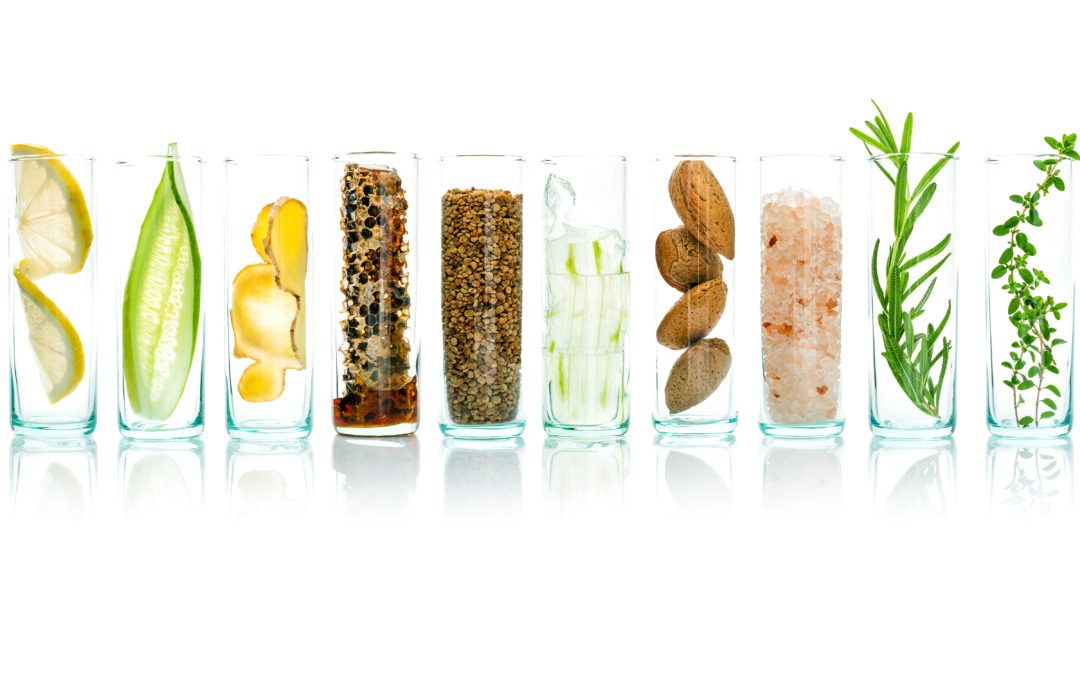What are the main ingredients in today’s skin care products and how do they improve the skin? There are a lot of skin care products on the market. This article will help you understand the latest ingredients in skin care products that may benefit your skin. If you’re still unsure which skin care products are right for you, consult with your esthetician or dermatologist.
Alpha-hydroxy acids (AHAs)

Over-the-counter skin care products containing alpha-hydroxy acids (glycolic, lactic, tartaric, and citric acids) have become increasingly popular in recent years. Creams and lotions with alpha-hydroxy acids may help with fine lines, pigmentation and age spots, and may help shrink enlarged pores. Side effects of alpha-hydroxy acids include mild irritation and sun sensitivity. To avoid burning, sunscreen should be applied in the morning. To help avoid skin irritation, start with a product with a maximum concentration of 10% to 15% AHA. To allow your skin to get used to alpha-hydroxy acids, you should only initially apply the skin care product every other day, gradually working up to daily application.
Beta-hydroxy acid (salicylic acid)
Salicylic acid removes dead skin and can improve the texture and color of sun-damaged skin. It penetrates oil-laden hair follicle openings and, as a result, also helps with acne. There are many skin care products available that contain salicylic acid. Some are available over-the-counter and others need a doctor’s prescription. Studies have shown that salicylic acid is less irritating than skin care products containing alpha-hydroxy acids, while providing similar improvement in skin texture and color.
Hydroquinone
Skin care products containing hydroquinone are often called bleaching creams or lightening agents. These skin care products are used to lighten hyperpigmentation, such as age spots and dark spots. Your doctor can also prescribe a cream with a higher concentration of hydroquinone if your skin doesn’t respond to over-the-counter treatments. If you are allergic to hydroquinones, you may benefit from use of products containing kojic acid instead.
Kojic Acid
Kojic acid is also is a remedy for the treatment of pigment problems and age spots. Discovered in 1989, kojic acid works similarly to hydroquinone. Kojic acid is derived from a fungus, and studies have shown that it is effective as a lightening agent, slowing production of melanin (brown pigment).
Retinol
Retinol is derived from vitamin A and is found in many over-the-counter “anti-aging” skin care products. Tretinoin, which is the active ingredient in prescription Retin-A and Renova creams, is a stronger version of retinol. If your skin is too sensitive to use Retin-A, over-the-counter retinol is an excellent alternative. Here’s why skin responds to skin care products with retinol: vitamin A has a molecular structure that’s tiny enough to get into the lower layers of skin, where it finds collagen and elastin. Retinol is proven to improve pigmentation, fine lines and wrinkles, skin texture, skin tone and color, and your skin’s hydration levels. Retinyl palmitate is another ingredient related to retinol, but is less potent.
L-Ascorbic Acid
This is the only form of vitamin C that you should look for in your skin care products. There are many skin care products on the market today that boast vitamin C derivatives as an ingredient (magnesium ascorbyl phosphate or ascorbyl palmitate, for example), but L-ascorbic acid is the only useful form of vitamin C in skin care products. With age and sun exposure, collagen synthesis in the skin decreases, leading to wrinkles. Vitamin C is the only antioxidant proven to stimulate the synthesis of collagen, minimizing fine lines, scars, and wrinkles.

Hyaluronic Acid
Skin care products containing this substance are often used with vitamin C products to assist in effective penetration. Hyaluronic acid (also known as a glycosaminoglycan) is often touted for its ability to “reverse” or stop aging. In news reports, you might have heard of hyaluronic acid as the “key to the fountain of youth.” This is because the substance occurs naturally (and quite abundantly) in humans and animals, and is found in young skin, other tissues, and joint fluid. Hyaluronic acid is a component of the body’s connective tissues, and is known to cushion and lubricate. As you age, however, the forces of nature destroy hyaluronic acid. Diet and smoking can also affect your body’s level of hyaluronic acid over time. Skin care products with hyaluronic acid are most frequently used to treat wrinkled skin.
Copper Peptide
Copper peptide is often referred to as the most effective skin regeneration product, even though it’s only been on the market since 1997. Here’s why: Studies have shown that copper peptide promotes collagen and elastin production, acts as an antioxidant, and promotes production of glycosaminoglycans (think hyaluronic acid, as an example). Studies have also shown that copper-dependent enzymes increase the benefits of the body’s natural tissue-building processes. The substance helps to firm, smooth, and soften skin, doing it in less time than most other anti-aging skin care products. Clinical studies have found that copper peptides also remove damaged collagen and elastin from the skin and scar tissue because they activate the skin’s system responsible for those functions.
Alpha-Lipoic Acid
You may have heard of alpha-lipoic acid as “the miracle in a jar” for its anti-aging effects. It’s a newer, ultra-potent antioxidant that helps fight future skin damage and helps repair past damage. Alpha-lipoic acid has been referred to as a “universal antioxidant” because it’s soluble in both water and oil, which permits its entrance to all parts of the cell. Due to this quality, it is believed that alpha-lipoic acid can provide the greatest protection against damaging free radicals when compared with other antioxidants. Alpha-lipoic acid diminishes fine lines, gives skin a healthy glow, and boosts levels of other antioxidants, such as vitamin C.
DMAE (dimethylaminoethanol)
If you’ve heard of fish referred to as brain food, you can thank DMAE. This substance is naturally produced in the brain, but DMAE is also present in anchovies, salmon, and sardines. DMAE boosts the production of acetylcholine, which is important for proper mental functions. DMAE in skin care products shows remarkable effects when applied topically to skin, resulting in the reduction of fine lines and wrinkles.
My recommendation is to ignore all the hype and whatever it says on the front of the packaging. Unfortunately, beauty marketers will use every trick in the book, such as lists of benefits. Sure, it’s expected for brands to call out what’s great about their product. But don’t let that deter you from doing your due diligence with the ingredients list. The worst is when a brand tries to give the impression of a natural product, but then you realize it’s still got the usual mediocre fillers.
Since the full ingredients list is only required on the actual product label, I’ve seen brands disclose just the cool-sounding, active ingredients on their websites or retailers’ websites—omitting the rest. If an ingredients list seems too short, they’re probably not telling you something! Alternatively, some brands with make their ingredients lists hard to find, such as under a sticker.
Having a seal of approval from a dermatologist is pretty meaningless, as there’s no standard industry definition of what that entails. The same goes for “clinically proven.” Even a plain bland moisturizer can be proven to make wrinkles look better, simply by puffing up the skin with water!
The one that bothers me the most is when brands call out a benefit that is actually the norm for that type of product. This sleight of hand usually happens with companion products such as shampoos and conditioners. Think: “silicone-free” shampoo and “sulfate-free” conditioner. (Shampoos tend not to contain silicones, and conditioners don’t have sulfates!)
So, instead of taking all those claims at face value, I suggest you head straight to the ingredients list on the back to see EXACTLY what’s in there. The next thing you want to do is zone in on the first five ingredients listed. Brands are always required to disclose their ingredients in the order of highest to lowest concentration. As a general rule, the first FIVE ingredients compose most (roughly 80 percent) of the product. So those are the most important ones to check. I usually look at the first five to 10, to be on the safe side—although some ingredients, like synthetic fragrances, I prefer not to see in formulas at all.

